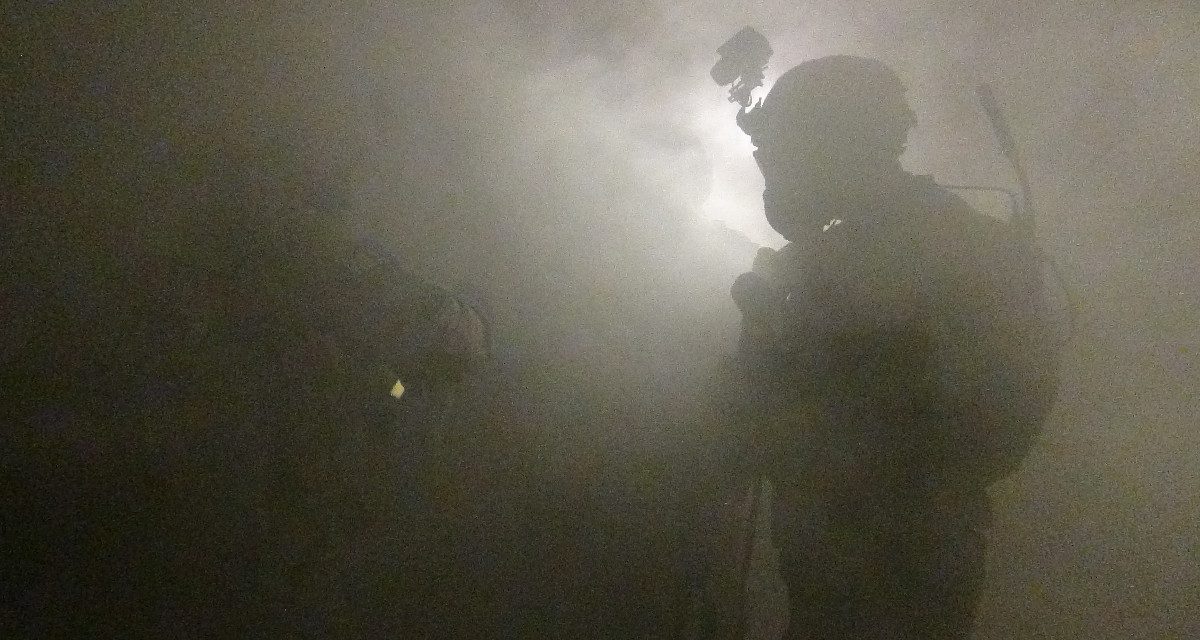Editor’s note: War Books is MWI’s occasional series featuring great books on war, strategy, and military history.
Tunnel warfare is as old as warfare itself. Tunnels have been used for a wide range of purposes in combat across the world and throughout the ages. They have been used to end sieges by circumventing castle walls, place explosive under enemy forces, avoid enemy aerial bombardments, and invade and escape hostile conflict zones. Their use has ebbed and flow with the changing character of warfare. They were seen on battlefields from the medieval age, through the American Civil War, World War I and Vietnam—and many conflicts in between.
And a quick glance around today’s global operating environment shows clearly that underground warfare isn’t going away. Tunnels marked battlefields in Iraq and Syria during the fight against the Islamic State. And state militaries—North Korea, Iran, the United States, and many others—invest heavily in military underground facilities. Meanwhile, terrorist and insurgents from Lebanon, Gaza, the Philippines and elsewhere share tunnel warfare tactics and techniques to wage war against nations.
Here is a list of books I recommend as a starting point for understanding and preparing for underground warfare.
Daphné Richemond-Barak, Underground Warfare
This is arguably the most comprehensive contemporary book on the subject available. Dr. Richemond-Barak conducts a survey of underground warfare, including an in-depth look at the increased use of tunnels around the world, from the strategic to the tactical levels. With a heavy dose of legal analysis she easily revels that there are major gaps in the laws and views towards what lays below all land conflict.
US Army, Army Techniques Publication (ATP) 3-21.51: Subterranean Operations
The latest in a series of doctrinal updates published by the US Army in recent years, this 2019 publication is meant to serve as guidance for the brigade level (a roughly 4,000-solider unit) and below on the conduct of subterranean operations. The book includes everything from a brief history of underground warfare and a categorization of the different types of subterranean spaces to tactical considerations and techniques to deal with fighting underground.
Tom Mangold, The Tunnels of Cu Chi: A Harrowing Account of America’s Tunnel Rats in the Underground Battlefields of Vietnam
Tunnels were used heavily by the North Vietnamese Army and Viet Cong during the Vietnam War. They were used to protected supply routes, hospitals, and command posts, to house troops, to launch surprise attacks, and much more. One of the most extensive and well-known tunnel complexes were those of the Cu Chi province northwest of Saigon. The Cu Chi tunnels linked Viet Cong support bases over a distance of 250 kilometers, from the outskirts of Saigon all the way to the Cambodian border.
Simon Jones, Underground Warfare 1914–1918
This book offers a great summary of military mining during World War I. Across the Western Front, military mining was a major component of the character of warfare. Tunnels were heavily used in places and battles such as Hohenzollern, St. Eloi, the Somme, Vimy Ridge, Arras, and Messines.
Gary Hemphill, Practical Tunnel Construction
It is important to understand how and where tunnels have been used in warfare. But it is also vital to understand when an environment is ideal for tunnels to be heavily used. What are the geo-technical considerations? What type of equipment and materials are needed? What are the signs of an enemy investing in the capability? Just how, exactly, are tunnels dug? Based on the soil conditions, how long would it take to dig in that environment? What are the required safety considerations? This book is a valuable tool to help understand these questions.
Bonus books
Will Hunt, Underground: A Human History of the Worlds Beneath Our Feet
Kenneth Wiggins, Siege Mines and Underground Warfare
Alan Axelrod, The Horrid Pit: The Battle of the Crater, the Civil War’s Cruelest Mission
Earl J. Hess, Into the Crater: The Mine Attack at Petersburg
Peter Barton, Beneath Flanders Fields: The Tunnellers’ War 1914–18
Riley St. James, 1968 — Into the Abyss: The Elite Tunnel Rats
Tom Mangold and John Penycate, The Illustrated History of Tunnel Warfare: The Vietnam War
Dale Blair, The Battle of Bellicourt Tunnel: Tommies, Diggers and Doughboys on the Hindenburg Line, 1918
David N. Chapman, Nicole Metje, & Alfred Stark, Introduction to Tunnel Construction (Applied Geotechnics)
John W. Spencer is chair of urban warfare studies with the Modern War Institute at West Point and co-director of its Urban Warfare Project. He previously served as a fellow with the chief of staff of the Army’s Strategic Studies Group. He served twenty-four years as an infantry soldier, which included two combat tours in Iraq.
The views expressed are those of the author and do not reflect the official position of the United States Military Academy, Department of the Army, or Department of Defense.
Image credit: Lt. Col. Sonise Lumbaca, US Army



Law enforcement agencies have addressed hydroponic underground marijuana operations for years. Military forces may need to reach out to local law enforcement